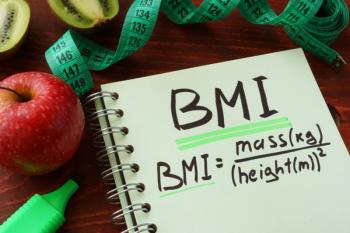
Substantial Health Care Burden Linked With Recurrent CDI for Medicare Advantage, Commercial Beneficiaries
A poster presented at the Academy of Managed Care Pharmacy Nexus 2022 showed that patients with recurrent Clostridioides difficile infection (rCDI), who had Medicare Advantage Part D coverage or were enrolled in a commercial health plan were associated with significantly greater health care resource utilization, including emergency department and inpatient visits, compared with those without rCDI.
Findings of a real-world analysis indicated that patients with
CDI is the leading cause of hospital-acquired infection in the United States, with an estimated 170,000 cases per year. The infection is
“rCDI can be especially burdensome due to the continued, repeated need for health care,” said the researchers.
A retrospective cohort study of administrative claims data from the Optum Research Database between March 1, 2014, and February 29, 2020, was conducted to assess the burden of illness among commercially and MAPD-insured patients with rCDI, defined as those with 1 or more rCDI episode within 12 or fewer weeks following primary CDI compared with those with primary CDI only.
“The initial CDI episode (index date) was defined as the first nondiagnostic medical claim with a diagnosis code for CDI (International Classification of Diseases, Ninth Revision and Tenth Revision) among adults 18 years of age or older who had no evidence of a prior CDI episode in the previous 12 months (baseline period),” explained the researchers. “The CDI end date was defined as discharge after a CDI-related inpatient stay, run-out date of oral CDI treatment, administration of a CDI treatment infusion, fecal microbiota transplant, or evidence of a medical claim with CDI diagnosis.”
Participants were examined on baseline clinical characteristics and demographics, cumulative incidence of primary CDI and subsequent episodes of rCDI, and all-cause HCRU, measured by emergency department (ED) and inpatient visits.
Patients of the rCDI group were further classified according to the number of rCDI episodes (1, 2, 3 or more) observed during the 12-week follow-up. Kaplan-Meier (KM) analysis estimated the risk of rCDI following the initial CDI, first rCDI, and second rCDI. The proportion of patients with rCDI and the number of rCDI episodes were also examined by insurance type.
A total of 26,006 patients with CDI were examined, of which 8615 had commercial insurance (n = 1890 with 1 or more rCDI) and 17,391 were MAPD beneficiaries (n = 4841 with 1 or more rCDI). Of the rCDI cohort, 65.8% were female, with a mean (SD) age of 69 (15) years and Charlson Comorbidity Index (CCI) of 2.7.
Overall, patients with rCDI had more postindex ED visits and inpatient admissions with longer length of stay compared with those of the primary CDI cohort:
- Commercially enrolled patients with rCDI averaged 14.2 inpatient days compared with 8.15 days among patients without rCDI (P < .001)
- MAPD beneficiaries with rCDI averaged 30.9 inpatient days vs 17.5 days among patients without rCDI (P < .001)
Results of the KM analysis showed that the cumulative incidence of rCDI at 6 months was 28.2%, 37.7%, and 45.9% for recurrence following the initial CDI, first rCDI, and second rCDI, respectively. Despite the commercial population being younger and having a lower CCI score, the rate of episodes was 24.5%, 34.5%, and 43.7%, respectively. The rates for the MAPD population were 29.9%, 38.9%, and 46.7%, respectively.
As the dataset was restricted to MAPD and commercial beneficiaries, the researchers said that results may not be generalizable to the broader US population. The lack of medical record data to verify claims was also cited as a limitation of the study findings.
“rCDI contributes to a substantial health care burden for commercial and Medicare patients and can lead to significantly more HCRU compared to primary CDI. Earlier and
Reference
Gratie D, Barnes T, Steffens A, et al. Patient burden of recurrent Clostridioides difficile: recurrence rates and healthcare resource utilization among commercial and Medicare Advantage insured populations. Presented at: AMCP Nexus 2022; October 11-14, 2022; National Harbor, MD. Abstract B16.
Newsletter
Stay ahead of policy, cost, and value—subscribe to AJMC for expert insights at the intersection of clinical care and health economics.















































